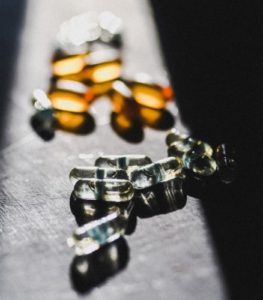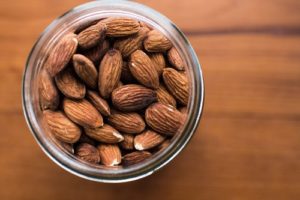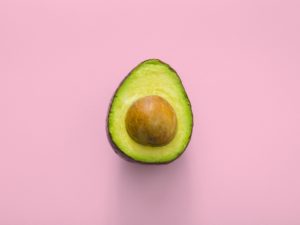Mitochondria are membrane-bound organelles present in almost all our cells. Responsible for orchestrating cellular energy production, they are central to the maintenance of life and the gatekeepers of cell death.2 As we discussed in our previous blog, “Why is Mitochondrial Health Important?” mitochondria are the absolute most critical physiological system involved in our energy levels.
Mitochondria are designed with specialised functions to efficiently break down carbohydrates and essential fatty acids, turning them into energy that is available to the cells for use or adenosine triphosphate (ATP). This powers the cells; it is the gas in our fuel tanks on the most basic level.
Virtually all the energy that powers the trillions of cells in our body comes from our mitochondria. If we are dealing with fatigue, that is almost certainly a sure sign that our mitochondria are not functioning well.
Moreover, mitochondria synthesize proteins for their own use. The mitochondria are intelligent and know how to allocate energy after breaking it down! It makes sense then that the foods we choose to eat, will play a crucial role in the optimisation or sabotaging mitochondrial function.
Here are our top recommendations.
 B VITAMINS
B VITAMINS
According to research1 any deficiency of an individual B vitamin can compromise mitochondrial function.
That’s because B vitamins are water-soluble vitamins required as coenzymes for enzymes essential for cell function. That’s a mouthful! Essentially these coenzymes then fuel the enzymes that are essential to proper cellular function.
Some of the best sources are:
- Liver. The liver is one of the most nutrient-dense foods on the planet. Like many animal foods, its nutrients are very available to the body and the cells. The liver is especially high in B vitamins, but it also contains some vitamin D, CoQ10 (also on the list), and iron – all of which can be particularly difficult to obtain from food.
I tend to buy an organic liver and cut it into small pieces and freeze in bags. At a later date, I will make pate, or I will add the small portion of the liver to say onion, garlic, or vegetables and blend all these together and add to a spaghetti bolognese sauce or a casserole. Alternatively, you could blend the whole thing (yes it will look like roadkill in your blender) initially with herbs, turmeric, salt, pepper, onion, and garlic and then freeze as a paste into ice cube trays, this way you have ready-made stock cubes.
- Sardines. A single serving of sardines offers up 338% of your daily recommendation for vitamin B12 – what I like to call the “energy vitamin.” Don’t love sardines – well it’s time to pretend and commit to eating them!! Your cells love their blend of nutrients.
- Lamb. Grass-fed lamb isn’t only delicious and rich with protein and healthy fats. It also provides an incredible B complex with high amounts of vitamin B12 plus B1, B2, B6, folate, and biotin. It’s a great addition to a normal B complex supplement, providing many of the same benefits (but again, with more bioavailability).
- Nutritional yeast. Nutritional yeast is so easy to add to the diet. They’re often found in the bulk section at the grocery store. These yellow-orange flakes taste cheesy so you can sprinkle them on top of savory dishes for a cheddar kick (without the dairy). Nutritional yeast contains lots of vitamin B12. While brewer’s, baker’s and nutritional yeasts are technically made from the same species of yeast, they are very different products.
- Baker’s yeast: Baker’s yeast is purchased alive and used to leaven bread. The yeast is killed during cooking but adds an earthy, yeasty flavour to the bread.
- Brewer’s yeast: Brewer’s yeast can be purchased alive and is used to brew beer. The dead yeast cells left over from the brewing process can be consumed as a nutritional supplement but have a very bitter taste.
SULFUR
Sulfur is the fourth most abundant mineral found in our bodies and a primary source of antioxidants in the mitochondria. Sulfur is an important component of the diet. It mainly comes to us in the form of cruciferous veggies and prebiotic foods with resistant starch and indigestible fiber which have their own impressive set of benefits (specifically for gut health).
Studies2 show that sulfur-rich foods increase mitochondrial permeability which essentially means a stronger barrier and defense system.
Eating too much raw cruciferous vegetable matter can be very uncomfortable for the digestive system so don’t go overboard.
- Onions are versatile, come in many varieties, and enhance nearly every savoury dish. They’re good raw or cooked for sulfur content.
- Garlic is another awesome antioxidant-rich, antibacterial, antimicrobial superfood. If you’re not starting off your dishes with fresh garlic, you should be! For your cells and for the amazing flavour.
- A healthy blend of spinach or kale – or greens ‘cycling’ – can hit all your mitochondria health needs! Kale provides essential sulfur in addition to compounds that later convert to sulfur, making it the gift that keeps on giving.
- Cabbage is fabulous both cooked and raw.
- Eggs – vegetables are not the only foods high in sulfur. Eggs are rich in methionine, a sulfur-containing amino acid. This natural compound regulates the immune system and metabolic processes. It also supports glutathione synthesis, protecting your cells and tissues from oxidative stress. See our related blogs on glutathione and oxidative stress.
 ZINC
ZINC
Zinc just so happens to be an antioxidant with anti-inflammatory properties. Studies3 reveal that zinc has the potential to reduce markers of oxidative stress markers in plasma and inhibit inflammatory cytokine production.
One study showed that Zinc supplementation trials in the elderly showed that the incidence of infections was decreased by approximately 66% in the zinc group. Zinc supplementation also decreased oxidative stress biomarkers and decreased inflammatory cytokines in the elderly. To clarify, cytokines are small proteins important for cell signaling, which is basically how the cells work/interact with one another.
Some of the best sources of zinc are:
- Oysters & mussels. Oysters and molluscs such as mussels are mineral powerhouses. As well as zinc, they are also high in protein, relatively low in calories, and packed with other valuable vitamins and minerals, including vitamin B-12, iron, and selenium.
- Grass-fed beef. Grass-fed beef is a superfood in disguise. That’s why it’s a staple in my diet. It’s a rich source of omega-3 fatty acids and CLA which have their own host of incredible benefits. It’s also a supercell food because a serving contains 37% of your daily zinc intake.
- Nuts are so nutritious (and delicious). Cashews are a favourite for boosting zinc intake, providing about 21% of the recommended dose. They are great for snacks and raw desserts.
- Pumpkin seeds. Pepitas are a tasty treat and a handful provides you with a TONE of zinc. 1/4 cup of pumpkin seeds provides around 17% of the RDA. Plus, pepitas are also quite rich with magnesium (another key nutrient for mitochondria health).
 COENZYME Q10
COENZYME Q10
Coenzyme Q10, CoQ10, or ubiquitol (the fully reduced form) helps cells to produce energy, it has shown an ability to stimulate the immune system and it acts as an antioxidant.
It isn’t the easiest thing to get in food form. Our bodies actually make it, but production declines with age. It’s notoriously difficult to get into your diet, so if you think you might be lacking in it, I do recommend taking a quality supplement. However, these are a few decent nutritive sources that provide plenty of additional advantages regardless, including some of the other big “mitochondria nutrients” on this list!
The main takeaway here is that CoQ10 acts similarly to other antioxidants on our list to protect our cells from oxidative stress and damage. Research shows4 that low levels are often found in cancer patients (a disease we can trace to the cell).
Some folks who are particularly at risk for deficiency are those who regularly take cholesterol-lowering drugs as the interaction makes it more difficult for the body to absorb CoQ10. After 50 years of age, your body also becomes far less efficient at producing CoQ10.
- Herring, mackerel, anchovies, and tuna. These seafood sources are amongst the best out there. If you want a true dose of CoQ10, these fish – fresh, smoked, or canned – are your best bet. For the hardcore folks, it’s worth noting that herring heart contains 12 whole mg of CoQ10!
- Extra virgin olive oil. Per 100 grams of olive oil, you can expect a significant dose of CoQ10 at around 11.4 mg! I love olive oil for making vinaigrette at home and drizzling over roasted veggies. Double up on CoQ10 and have your seafood with a tablespoon or two.
- I love everything about an organic egg. They might just be the perfect food. They’re rich with essential fatty acids, protein, and so many beautiful nutrients. The yolks provide around 0.52 mg of CoQ10 per 100-gram serving. Don’t just eat the whites!
- Grass-fed butter. Cooking with butter or drinking bulletproof coffee could boost CoQ10. A serving of butter comes in at 0.70 mg.
 MAGNESIUM
MAGNESIUM
Magnesium is a super important mineral for our cells. It aids in the production of ATP – the full-time job of our cells. It’s relatively easy to become deficient in magnesium, but it’s also easy to get from a variety of whole foods, so a paleo diet can really help address the issue if you’re lacking it.
At the end of the day, the mitochondria generation requires magnesium. Give your cells the fuel they need with these foods.
- Almonds. A cup of almonds provides around 20% of the RDA for magnesium. Snacking on almonds is a solid and healthy choice, but also adding things like almond milk and almond flour to the diet in place of dairy and grains can give you the boost you need.
- A medium avocado provides around 60 mg of magnesium and filling, nourishing, healthy fats.
- With 157 mg per cup, spinach is the go-to green for magnesium. All leafy greens have their benefits and are also rich with fibre, vitamin A, and vitamin C. Spinach makes a great base for salads, is tasty wilted into soups, and is easily blended into smoothies. Swiss chard contains approximately the same amount of magnesium.
- Bananas. A medium banana provides the body with around 8% RDA of magnesium. For the ultimate magnesium boost, make the perfect green smoothie with this dynamic, magnesium-rich blend of foods!
Additional Supplements You Can Take:
- Pyrroloquinoline quinone (PQQ) is one of the most powerful promoters of mitochondrial biogenesis ever discovered.5,6 Mitochondrial biogenesis is the process of your cells literally building more new mitochondria — cellular energy generators — from scratch. Since the loss of mitochondria is one of the key drivers of fatigue (especially aging-associated fatigue), stimulating mitochondrial biogenesis is absolutely critical. And few things do it better than PQQ!
- Supplementing with resveratrol can actually help mimic the benefits of calorie restriction for the cells without the work. It can be helpful in protecting cells if you don’t have a reason to restrict calories (lose weight) or are eating at a calorie surplus (to gain weight/muscle)
- .Alpha-lipoic acid aids in the uptake of glucose in addition to burning through fatty acids. It’s essential for keeping cells alive because of the role it plays in biogenesis – a.k.a. the production of new organelles.
- Astaxanthin is the red pigment in shrimp, salmon, krill, and various other seafood, but it is originally made by algae (mainly Haematococcus pluvialis). It is thought to be one of the most effective antioxidants known to man. It’s also one of the most powerful protectors of our cellular energy generators (our mitochondria) in existence.
One study where male students ages 17 to 19 who took 4mg per day of astaxanthin for six months found that it improved their strength and endurance by an impressive 62 percent! Moreover, their endurance increased 300% faster than the control group!7
- L-Arginine. The positive effects of this supplement can actually recreate the biochemical pathways formed from exercise and its positive impact on the cells. In short, it protects the mitochondria.
- As discussed earlier sometimes it’s easier to supplement coenzyme Q10 than to consume it.
As you can see there’s so much to learn about the mitochondria and how we can preserve and protect them through both a robust healthy diet and through the other key strategies we outlined in our blog ‘Why is Mitochondrial Health Important?” Through solid sources of nutrition discussed here and the lifestyle habits discussed previously we’ll be well on our way to bio-hack our cellular health!
References:
1. Depeint F, Bruce WR, Shangari N, Mehta R, O’Brien PJ. Mitochondrial function and toxicity: role of the B vitamin family on mitochondrial energy metabolism. Chem Biol Interact. 2006;163(1-2):94-112. doi:10.1016/j.cbi.2006.04.014
2. Greco T, Shafer J, Fiskum G. Sulforaphane inhibits mitochondrial permeability transition and oxidative stress. Free Radic Biol Med. 2011;51(12):2164-2171. doi:10.1016/j.freeradbiomed.2011.09.017
3. Prasad AS. Zinc is an Antioxidant and Anti-Inflammatory Agent: Its Role in Human Health. Front Nutr. 2014;1:14. Published 2014 Sep 1. doi:10.3389/fnut.2014.00014
4. PDQ Integrative, Alternative, and Complementary Therapies Editorial Board. Coenzyme Q10 (PDQ®): Health Professional Version. 2020 Jun 4. In: PDQ Cancer Information Summaries [Internet]. Bethesda (MD): National Cancer Institute (US); 2002-.Available from: https://www.ncbi.nlm.nih.gov/books/NBK65890/
5. Chowanadisai, W. et al. Pyrroloquinoline quinone stimulates mitochondrial biogenesis through cAMP response element-binding protein phosphorylation and increased PGC-1alpha expression. J. Biol. Chem. 285, 142–152 (2010).
6. Hwang, P. & Willoughby, D. S. Mechanisms Behind Pyrroloquinoline Quinone Supplementation on Skeletal Muscle Mitochondrial Biogenesis: Possible Synergistic Effects with Exercise. J. Am. Coll. Nutr. 1– 11 (2018).
7. Malmsten, C., et al., Dietary Supplementation with Astaxanthin-Rich Algal Meal Improves Strength Endurance







